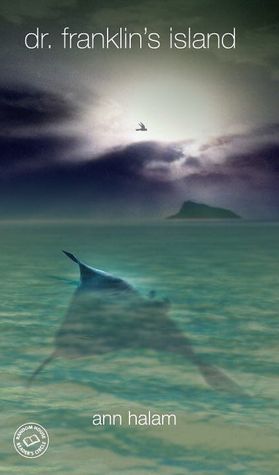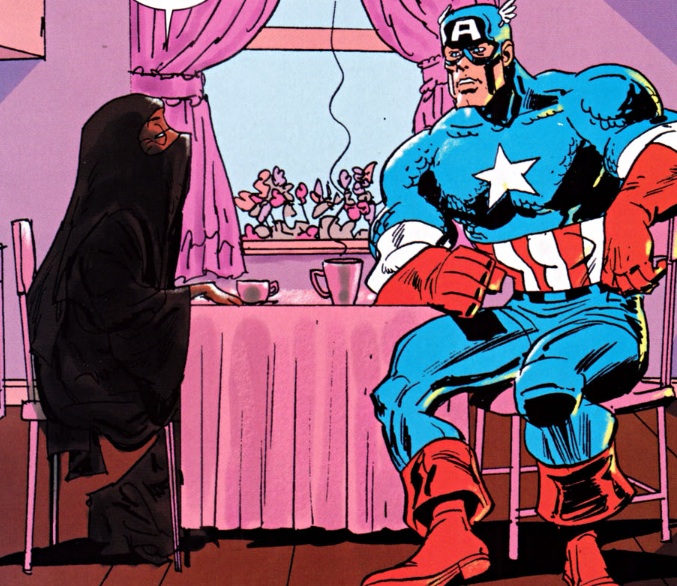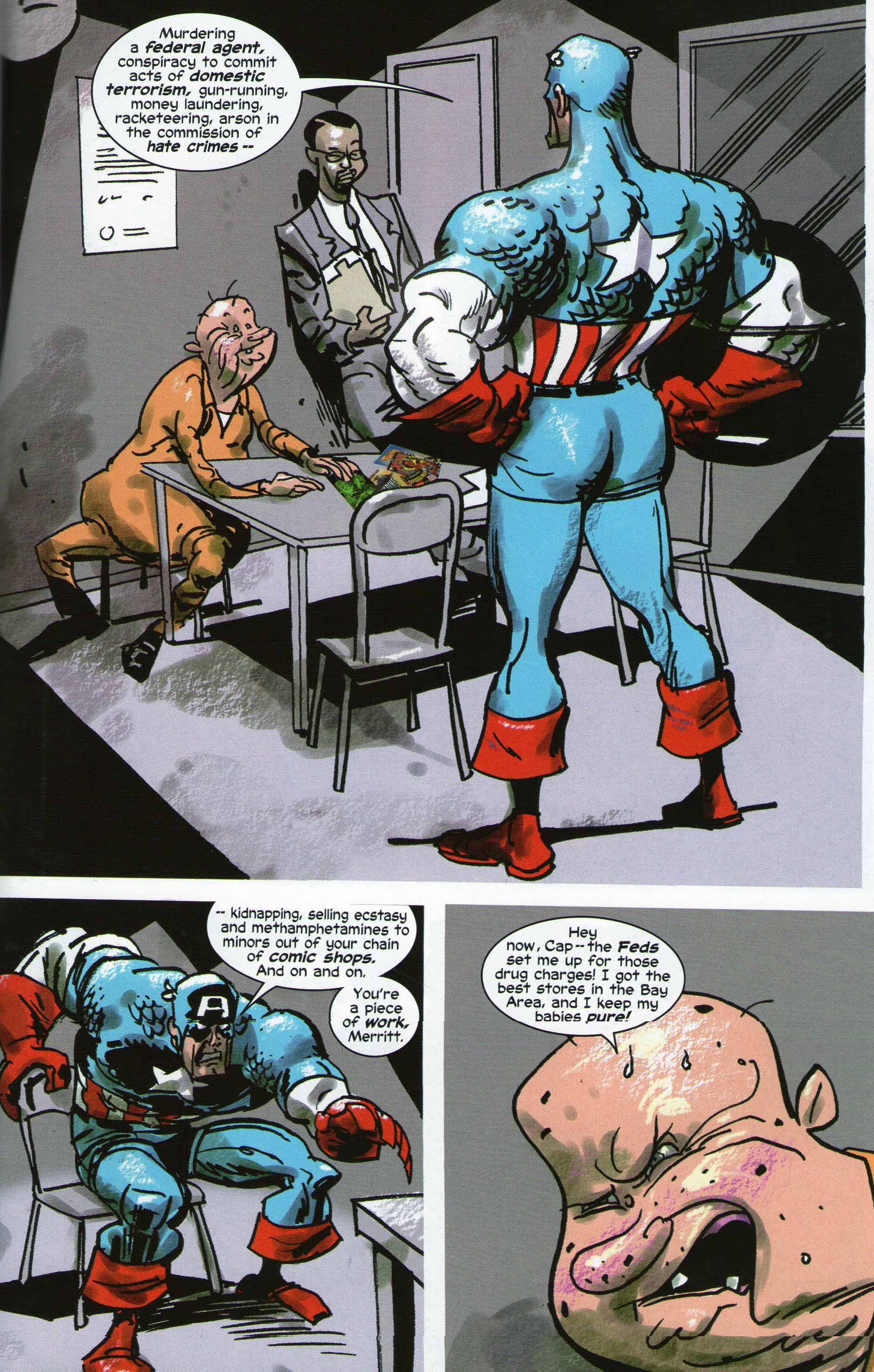This is part of a roundtable on The Best Band No One Has Ever Heard Of. The index to the roundtable is here.
___________

Cardiacs are a British band from Surbiton. They were active from the late 1970s through 2008 — a lengthy career that can be divided into at least two distinct phases — and in that time they produced several difficult-to-describe albums. I like aspects of all their records and rank certain pieces alongside any earthly music that I have heard, from any era and any nation. (In fact, some of you might just want to cut to the chase and check out my personal favorite Cardiacs composition, “The Everso Closely Guarded Line,” before reading any further. It’s the final track from their 1989 album, On Land And In The Sea: an attention-demanding eight-minute mini-epic distinguished by recapitulated sequences of Baroque-style melodic counterpoint. The last three or four minutes coalesce into a rhythmically complex, anthemically rousing passage of such startling beauty that my heart swells in my chest and my eyes get all watery every time I listen to it. I recommend turning off the phone and the lights before hitting play. It’s available here in HD audio:
.
Don’t forget to adjust your YouTube settings for full quality!)
Adoring the band as I do, I have often thought that it would be nice to share my enthusiasm with friends and acquaintances. But Cardiacs can be a tough sell. Most people have simply never heard of them. But it also turns out that lot of the people who have heard of them don’t like them.
They are a challenging proposition. I’ll concede that right away. Their overall sound is a rebarbative fusion of punk and progressive rock. Like a lot of classic punk acts, their music is often abrasively loud and manically fast, and combines grating, adenoidal vocals with aggressive guitar-based riffing. But like a lot of progressive rock bands, they have a penchant for odd time signatures, multi-layered arrangements, surprising chord modulations, and unpredictable song structures that eschew the traditional verse-chorus-verse template. Tim Smith’s lyrics are also strange and obscure, shot through with grotesque humor and playful mock-infantilism. Themes of suburban alienation (“A Little Man and a House”), the confusion and profusion of sexual desire (“Buds and Spawn”), and apocalyptic religiosity (“Fiery Gun Hand”) are all discernable, but rarely resolve into a coherent statement; the results can be entertaining, frustrating, and unsettling, by turns.
I think this unlikely blending of two ostensibly opposed popular musical genres — punk and prog — aggravates some listeners for reasons that are as much ideological as aesthetic. To be more precise: I think the music of Cardiacs inadvertently exposed the deep formal conservatism behind the putatively radical aesthetic assumptions of the British music press in the 1980s, according to which punk and prog were regarded as essentially equivalent to matter and anti-matter. Certainly, the punk-worshiping journalists of the early 80s were primed to despise anything that smacked of prog almost reflexively; the idea that a band might try and bring both genres together to forge a new idiom simply could not be countenanced. Consequently, Cardiacs were repudiated more harshly than many bands of the same era that committed the (more ordinary) musical sins of blatant commercialism and shameless derivativeness.
For example, reviewing the Big Ship 12-inch (1986) — Cardiacs’ first vinyl release — Mick Mercer of the Melody Maker suggested that somebody should “arrest these peasants before they get another chance.” For Mercer, it was as if the band had committed some kind of musical crime. A year later, reviewing A Little Man and a House and the Whole World Window for the New Musical Express, Jack O’Neill was even harsher: “Cardiacs are the sound of both feet in the grave,” he opined. What’s more, shortly following O’Neill’s review, the editors at the NME — a powerful organ of musical opinion at the time — seem to have taken the unusually vindictive step of blacklisting the band altogether. Even if another musician or band cited Cardiacs admiringly, the subsequent article or interview would eliminate the reference; no one was allowed to say anything good about them!
It wasn’t just the press who reacted with revulsion in those early days. I witnessed at first hand the hatred that Cardiacs could inspire in an audience on what was (tragically, for me), the only occasion that I ever saw them perform live. The year was 1984, and I was fifteen years old when I caught Cardiacs as the support group for a headline act that I am now embarrassed to name — although of course it was that headline act that I had actually gone out to see. (OK, it was Marillion, but please don’t hold that against me, or more importantly against Cardiacs, who really don’t sound anything like Marillion at all.)
I can still clearly recall that both Tim Smith (lead guitar, vocals, principal song-writer) and Sarah Smith (saxophone) were wearing garish, clown-like make-up, to disturbing fake-jolly effect. I also remember a few obviously choreographed bits of cabaret-style theater. For example, there was a curious Brechtian mini-drama during the final number, in which Tim was joined onstage by an MC-figure in tie-and-tails who presented him with a bottle of champagne and then showered him in confetti — a display that seemed to move Tim to tears. (You can see a version of this set-piece here, played on a much larger scale and stage for a more receptive crowd.)
Cardiacs were hardly the first band to incorporate such antics into their act, of course. But at the time, even the slightest gesture towards such self-consciously “arty” theatricality was very much out of fashion. I doubt most of the teenagers in the crowd had ever seen anything like it — I certainly hadn’t — and the unfamiliarity of the performance style might partly explain why the response was so blisteringly savage. Within a few minutes of taking the stage, Cardiacs were under attack; bottles, cans, and homophobic obscenities (anything different was “queer” in Cardiff in 1984) were hurled at them in a barrage that lasted for pretty much the entire set. (In retrospect, the viciousness of the crowd only made Tim’s clown-child onstage persona seem even more vulnerable and incongruous — thereby adding to the affectively off-kilter dynamic that he was clearly trying to generate.) It was a pretty horrifying scene, really, but the band just played right through the storm of missiles and insults as if it wasn’t happening. Perhaps they had already got used to that kind of reception; I’ve read it was even worse at other gigs on this tour. (Apparently, at one show irate audience members set fire to the stage curtain in an effort to drive the band off). Still, it cannot have been easy to keep going in the face of such violent hostility.
As for me — I pretty much loved the band instantly. I’m not sure what it was, but I just knew the audience had got it wrong — and that something was happening on that stage that was a lot more interesting and unexpected than what I had come out for that night, even if I wasn’t fully able to process it. The sound and the look were unusual, no doubt about it. But it got under my skin and into my head and I knew I wanted more.
Unfortunately, I didn’t even know what the band was called. The ticket and posters just said “Marillion plus support.” It would be some days before I learned the name, talking to an older kid at school who it turned out had also been at the gig (apparently he’d seen the word “CARDIACS” stenciled on an amplifier or equipment box or something). And even when armed with this information, I could not find any records by the band in the local shops. (Reasonably enough; Cardiacs had yet to release anything on vinyl, as it turns out, although they had released several recordings in a cassette-only format of very limited distribution. In the absence of the Internet, however, I had no way of knowing any of this.)
In fact, almost three years would pass before I finally stumbled over a Cardiacs album one fateful day in 1987, while browsing the racks in Cardiff’s justly famous Spillers Records. It was called A Little Man and a House and the Whole World Window; the cover image was a black and white photo of a giant daisy. I saw the name, I remembered that weird, intense, disconcerting gig from what already seemed like eons ago (three years is a long time when you are a teenager), and I bought the thing, unheard and untested, and eagerly caught the bus home to play it.
I loved this record instantly, too, and even recognized some bits and pieces from the show I had seen (such as the repeated refrain of “that’s the way we all go” from the title track and the song “RES”). This time, though, I was encountering them in the context of an ambitiously “modernist” concept album (or near enough) about the fear and loneliness and false bonhomie engendered by contemporary urban life — and the idea that something bigger than the big city might be glimpsed out of the “whole world window.” (For a lengthy review that does a superb job contextualizing both the band and this unusual record, check out the essay by Sean Kitching in The Quietus from last year)
I was now a bona fide Cardiacs fan; nevertheless, I somehow missed their next album (1989’s on On Land and In The Sea) — probably due to my being wrapped up in my final year at university — and then in the early 90s I left the UK for the United States, and got distracted by … well, a whole bunch of things. After a few more years I even got rid of my record player (though not my records) and over a decade passed when I didn’t listen to the Cardiacs music at all.
But just a couple of years ago I was going through my old vinyl records with a view to finally selling them off when I found my (now more than twenty-years-old) copy of A Little Man and a House … and found myself wondering “what happened to these guys?” And this time, thanks to the marvelous technology of the Internet I was able to make a belated rediscovery of the band. I think this is the closest I have come to that uniquely 21st century experience of hooking up with an old high-school sweetheart in middle age via Facebook. I feel as if I should have loved this band all my life; that other groups were mere dalliances by comparison to this — the real thing. Getting back into Cardiacs has felt like coming home, and for the last few years I’ve listened to them with more passionate interest than almost any other band, almost as if I’ve been trying to make up for lost time.
I swiftly learned that they too had gone through some major transitions in the early nineties, transforming from a six person line-up featuring saxophone, keyboards, and a second percussionist along side guitar, bass, and drums, into a leaner and meaner guitar-driven quartet. To my delight, I also discovered that I liked this later incarnation as much as the band I first fell for back in the 80s. The musical texture of their sound obviously changed with their instrumentation, but all the things that I loved — the strangeness and complexity and inventiveness and emotional intensity — were still there in abundance. They still had the capacity to disturb and they still had that wild, ecstatic, manic joyfulness.

Rather less happily, I also learned of the terrible series of strokes that laid Tim Smith low and almost ended his life in 2008 (apparently when he was just on the eve of completing the first Cardiacs album of the 21st century). According to several reports, while Tim’s mind is as sharp as ever, he is now partially paralyzed and badly in need of ongoing physical therapy. I continue to hope that one day we may hear better news from the Cardiacs camp regarding his condition, but for the time being, at least, it seems unlikely that he will be able to lead his band onto to a stage again. (The story is covered here in article from The Guardian. I suspect this article represents the only time Cardiacs ever got a write up in the mainstream British press, which is a bitter irony and a damned shame all by itself.)
For a few years after this disaster, the Cardiacs website was dormant and the albums slipped out of print (although old copies would sell for quite shockingly inflated prices on eBay). As of last year, however, the shop at their website re-opened, and you can now buy all their albums once again, direct from the UK. So if after reading this and listening to any of the tracks I’ve chosen as a selection, if you do decide you want to hear more, PLEASE consider ordering the CDs from Mary at the website. A good portion of the proceeds will go towards Tim’s ongoing medical expenses, so you can actually feel good about an act of self-indulgence, even as you acquire some of the most interesting and under valued British pop music of the last century. Humanity point and hipster points in one happy purchase — you can’t go wrong!
OK, time now for a few sample tracks from across the career. This is an entirely personal and idiosyncratic set of choices — other Cardiacs fans might have made a very different selection — but I’ve also tried represent some of the different musical phases of the band with the few choices.
1. TO GO OFF AND THINGS
That link to the disturbing original video, although personally I’d rather just listen to the track which is intense enough as it is. This version is from the CD re-release of one of those obscure “cassette only” albums from the early 1980s, The Seaside. I actually remember them playing this when I saw them; the stop-start riff was very distinctive, and the whole band would freeze each time the music stopped. I think it’s this kind of track led music critics to call Cardiacs a Pronk band (after the unlikely mixture of Prog and Punk). Tim rejected the label, preferring “psychedelic” — if you have to have a label for us, he said — but this is indeed pretty pronky, IMO. Recently covered by Napalm Death.
2. A LITTLE MAN AND A HOUSE
A fade-in and crash, followed by some ominous parping on the horns and strings, and then those too fade away, replaced by muted industrial clanking sounds, over which a tentative, anxious character sings of his eagerness to get to work on time. And things get stranger from there. I think this album really needs to be heard of a piece … but maybe this first track will whet your appetite. (You should skip I’m Eating in Bed if listening to the whole thing, BTW, and listen to it later; it’s a fine track — but it was not part of the original album release and doesn’t really belong there.)
3. THERE’S TOO MANY IRONS IN THE FIRE
A delirious single from 1987. I. Inspired performances from the rhythm section in particular. Love this one. Echt Cardiacs.
4. BUDS AND SPAWN
This version kindly uploaded in HD so your dog can appreciate the higher frequencies. From On Land And In The Sea. This track completely defies my powers of description. It comes in so many different pieces and the tempo shifts are truly boggling — I can’t imagine the amount of rehearsal required to pull this off. And yet it really doesn’t feel like prog-muso showing off to me. It’s just too damn manic for that. I hear something new in it every time.
5. DAY IS GONE
Can’t find this in higher than 240p, but this should be good enough to get the flavor. With this track we jump to 1992 and the Heaven Born and Ever Bright Album album — the first by the more stripped-down four-piece the band became in the 1990s. This is a remarkable composition that manages to look backward to 1960s psychedelia and forward to the future of pop, at the same time. In another instance of the band’s bad luck, ROUGH TRADE (the record label) went bankrupt shortly after this record was released and the album became impossible to find till 1995 when Tim was able to re-release it on his own label.
6. FIERY GUN HAND
A relatively straight-ahead rocker (well, almost … the instrumental break is quite mental). From Sing To God (1996), a double album that most fans consider to be Cardiacs’s masterpiece. I think I like on On Land And In The Sea (1989) slightly more, but both are wonderful, and Sing To God has just been re-released in a deluxe 180g vinyl pressing for all you true audiophiles.
7. DIRTY BOY
For this one, I’m just going to quote a section of Sean Kitching’s recent review of that deluxe new vinyl edition of Sing to God, since he offers a better summary of this song than I could possibly write myself.
‘Dirty Boy’ is perhaps the album’s crowning achievement. It begins with a guitar riff reminiscent of Alice Cooper’s ‘I’m Eighteen’ and alchemically transmutes its base material over the course of its nearly nine minutes duration with celestially ringing sounds constructed by innumerably overlaid strata of acoustic guitar and incredibly drawn out sustained vocals that when performed live had an undeniably consciousness-altering effect on all those present.” (For the whole review, go here.
8. THE EVERSO CLOSELY GUARDED LINE
.
Here it is again just in case you didn’t play it already. And here they are doing it live many years later — bootleg sound, of course, but they pull it off.
Enjoy!







